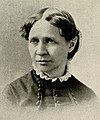
The American Peace Society is a pacifist group founded upon the initiative of William Ladd, in New York City, May 8, 1828. It was formed by the merging of many state and local societies, from New York, Maine, New Hampshire, and Massachusetts, of which the oldest, the New York Peace Society, dated from 1815. Ladd was an advocate of a "Congress and High Court of Nations." The society organized peace conferences and regularly published a periodical entitled Advocate of Peace. The Society was only opposed to wars between nation states; it did not oppose the American Civil War, regarding the Union's war as a "police action" against the "criminals" of the Confederacy. Its most famous leader was Benjamin Franklin Trueblood (1847–1916), a Quaker who in his book The Federation of the World (1899) called for the establishment of an international state to bring about lasting peace in the world. In 1834 the headquarters of the society were removed to Hartford, in 1834 to Boston, Massachusetts, in 1911 to Washington, D.C. The group is now based in Washington. Its official journal is World Affairs.

Sorosis was the first professional women's club in the United States. It was established in March 1868 in New York City by Jane Cunningham Croly.
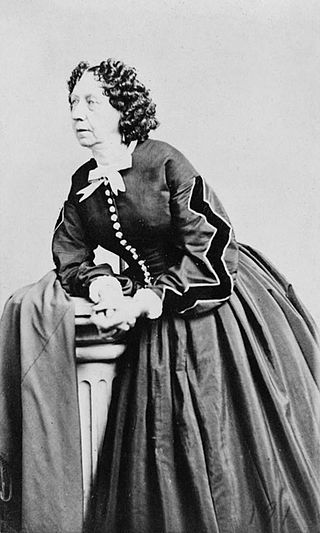
Fanny Fern, was an American novelist, children's writer, humorist, and newspaper columnist in the 1850s to 1870s. Her popularity has been attributed to a conversational style and sense of what mattered to her mostly middle-class female readers.
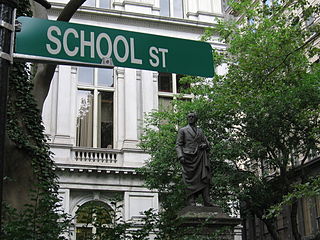
School Street is a short but significant street in the center of Boston, Massachusetts. It is so named for being the site of the first public school in the United States. The school operated at various addresses on the street from 1704 to 1844.

Ticknor and Fields was an American publishing company based in Boston, Massachusetts. Founded as a bookstore in 1832, the business published many 19th-century American authors, including Ralph Waldo Emerson, Nathaniel Hawthorne, Henry James, Henry Wadsworth Longfellow, Harriet Beecher Stowe, Henry David Thoreau, and Mark Twain. It also became an early publisher of The Atlantic Monthly and North American Review.

The Boston Almanac was an almanac and business directory in 19th century Boston, Massachusetts published by Samuel N. Dickinson. Its offices were destroyed in the Great Boston Fire of 1872. The first almanac was published in 1836, and continued annually until at least 1894. Just about all editions contained a chronology of major events in Boston for the previous year or two years. Each almanac contained business listings, advertisements, and often city and/or state department information. Railroad, omnibus, and horse car companies were usually listed in a separate section. Some volumes highlighted famous buildings or places.
Early New Zealand Books (ENZB) is a project from the library of the University of Auckland, New Zealand, launched in 2005, that aims at providing keyword-searchable text of significant books published about New Zealand in the first two-thirds of the nineteenth century. It also includes the subsequently published memoirs, journals and correspondence of people active in this era. The project has been funded and managed by the University of Auckland Library and has been freely available on the internet; as of 2024, the database is temporarily only accessible by staff and students of the university.

The Flag of Our Union (est.1846) was a weekly story paper published in Boston, Massachusetts, in the mid-19th century. In addition to news it featured works of fiction and poetry including contributions from notable writers such as Louisa May Alcott and Edgar Allan Poe. Publisher Frederick Gleason began The Flag in 1846, a "miscellaneous family journal, containing news, wit, humor, and romance -- independent of party or sect." Original stories, verse, and illustration appeared in the paper, as well as brief news items on local, national and international current events. Maturin Murray Ballou served as editor. In 1849, Gleason's office was located "on the corner of Court and Tremont Streets" in Boston.

William Pembroke Fetridge (1827-1896) was a travel writer, publisher, bookseller and periodicals distributor. He lived in the Boston, Massachusetts area and in Paris, France.
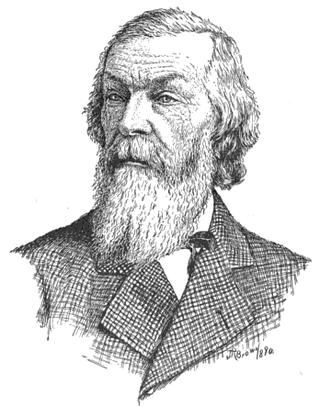
Benjamin Franklin Nutting was an artist in Boston, Massachusetts, in the 19th century. He taught drawing in local schools, published do-it-yourself drawing instruction materials, and showed his artwork in several exhibitions.
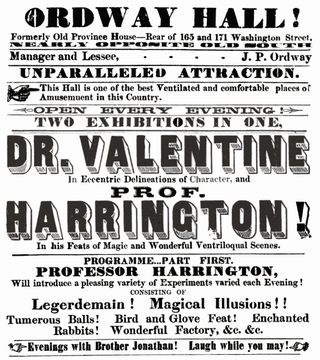
Ordway Hall (est.1852) was a theatre in Boston, Massachusetts located off Washington Street in the former Province House. John P. Ordway established and managed the hall, which specialized in "negro minstrelsy," particularly the Ordway Aeolians, his own troupe.

William Croome (1790–1860) was an American illustrator and wood engraver in the 19th century. He trained with Abel Bowen in Boston, Massachusetts. Croome's work appeared in the American Magazine of Useful and Entertaining Knowledge (1830s), Lady's Annual (1830s), Crockett Almanac (ca.1840s), and in numerous children's books.
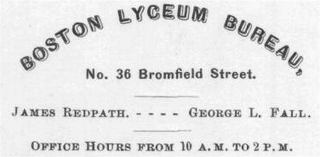
The Boston Lyceum Bureau (est.1868) in Boston, Massachusetts, was a project of James Redpath and George L. Fall. Its office stood at no.36 Bromfield Street. "Through its agency, many ... lecturers and authors of celebrity have been introduced to American audiences," including Frederick Douglass, Mark Twain, and George MacDonald.
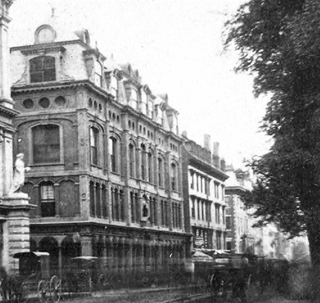
The Studio Building (1861–1906) on Tremont Street in Boston, Massachusetts, housed artists' studios, theater companies and other businesses in the 19th century. It "held the true Bohemia of Boston, where artists and literati delighted to gather." Among the tenants were portraitist E.T. Billings, architect George Snell, sculptor Martin Milmore, artists William Morris Hunt, William Rimmer, Edward Mitchell Bannister, Phoebe Jenks; gallerist Seth Morton Vose, and many others.

Samuel Langhorne Clemens , well known by his pen name Mark Twain, was an American author and humorist. Twain is noted for his novels Adventures of Huckleberry Finn (1884), which has been called the "Great American Novel," and The Adventures of Tom Sawyer (1876). He also wrote poetry, short stories, essays, and non-fiction. His big break was "The Celebrated Jumping Frog of Calaveras County" (1867).

The American House was a hotel in Boston, Massachusetts, located on Hanover Street. Abraham W. Brigham, Lewis Rice (1837–1874), Henry B. Rice (1868–1888), and Allen C. Jones served as proprietors. In 1851 the building was expanded, to a design by Charles A. Alexander. In 1868 it had "the first hotel passenger elevator in Boston." By the 1860s it also had "billiard halls, telegraph office, and cafe." In the late 19th century it was described as "the headquarters of the shoe-and-leather trade" in the city. Guests of the hotel and restaurant included John Brown, Ralph Waldo Emerson, William Whitwell Greenough, Charles Savage Homer, Zadoc Long, and George Presbury Rowell. Many groups held meetings there, among them: Granite Cutters' International Association of America, Letter Carriers' Association, National Electric Light Association, and New England Shorthand Reporters' Association. The hotel closed in 1916, and re-opened under new management in 1918. It permanently closed on August 8, 1935, and the building was shortly afterwards demolished to make room for a parking lot. The John F. Kennedy Federal Building now occupies the site.
The Dana family is a Boston Brahmin family that arrived in Cambridge, Massachusetts from England during the later end of the Puritan migration to New England (1620–1640).
Frances Elizabeth Barrow was a 19th-century American children's writer.



